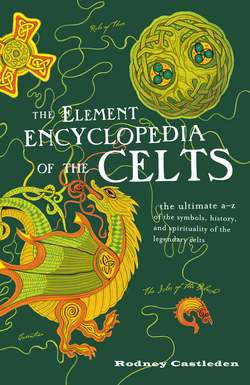Читать книгу The Element Encyclopedia of the Celts - Rodney Castleden - Страница 92
CHARIOTS
ОглавлениеChariots were used for showing off before battle. Queen Medb of Connaught, for example, was driven in her chariot around her camp as a prelude to battle.
Here is what Julius Caesar had to say about the British Celts on the battlefield:
In chariot fighting the Britons begin by driving all over the field hurling javelins, and generally the terror inspired by the horses and the noise of the wheels are sufficient to throw the opponents’ ranks into disorder. Then, after making their way between the squadrons of their own cavalry, they jump down from the chariots and engage on foot. In the meantime their charioteers retire a short distance from the battle and place the chariots in such a position that their masters, if hard pressed by numbers, have an easy means of retreat to their own lines. Thus they combine the mobility of cavalry with the staying-power of infantry; and by daily training and practice they are able to control the horse at full gallop, and to check and turn them in a moment. They can run along the chariot pole, stand on the yoke, and get back into the chariot as quick as lightning.
Caesar saw all this first hand and he was impressed by what he saw.
Chariots could also acquire cult status. Two Gaulish cult vehicles were imported, dismantled, and buried in a mound with a cremation burial at Dejbjerg in Denmark in the first century BC. There was a throne at the center of each wagon, and the bodies buried at the site are believed to have been female. Were they perhaps warrior queens?
No British Iron Age chariots have survived, though a chariot wheel was found in a second-century rubbish pit. It was a single piece of ash bent in a circle, fixed to an elm hub, with willow spokes. Early Irish folk-tales, such as The Wooing of Emer, from the Ulster Cycle, offer descriptions of working chariots:
I see a chariot of fine wood with wickerwork, moving on wheels of white bronze. Its frame very high, of creaking copper, rounded and firm. A strong curved yoke of gold; two firm-plaited yellow reins; the shafts hard and straight as sword blades.
